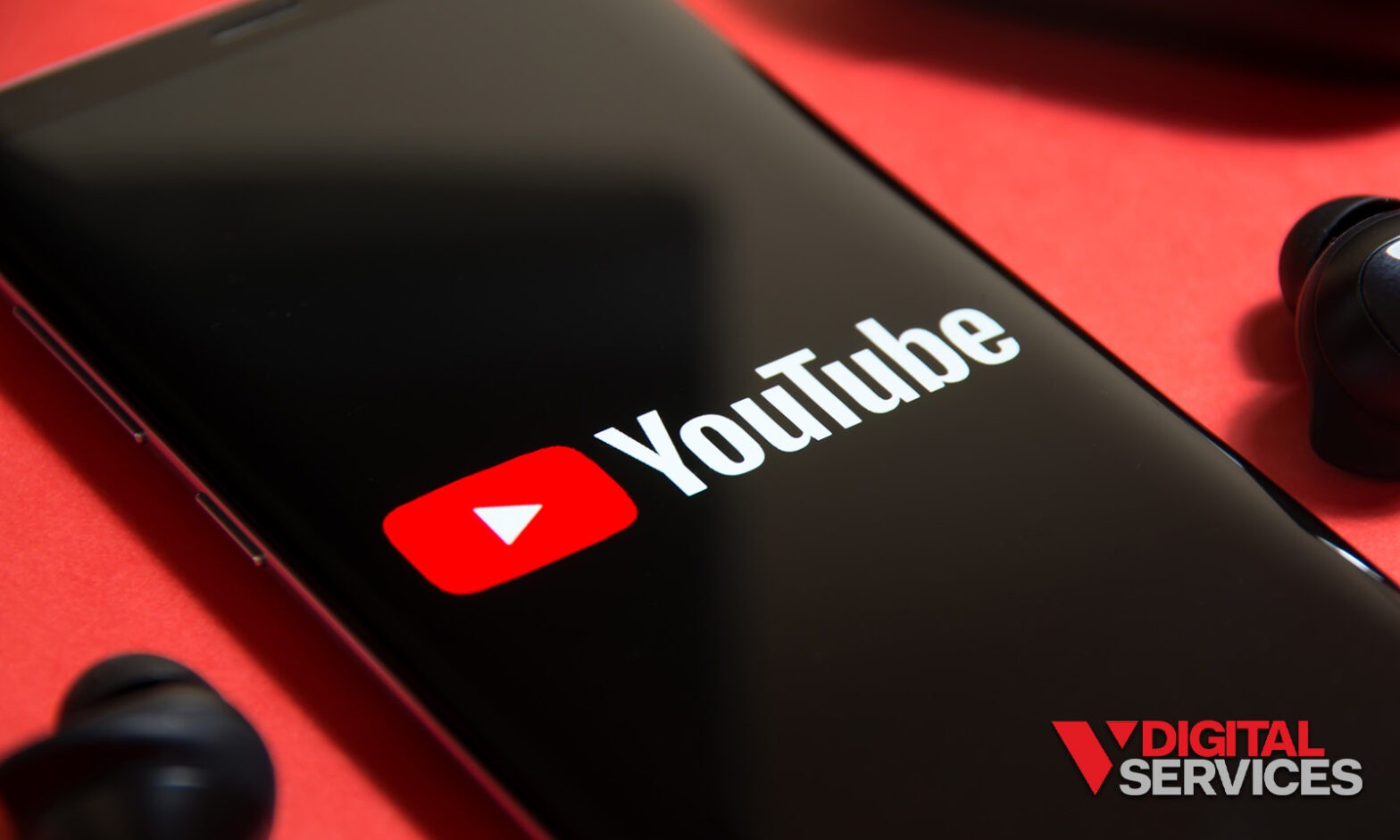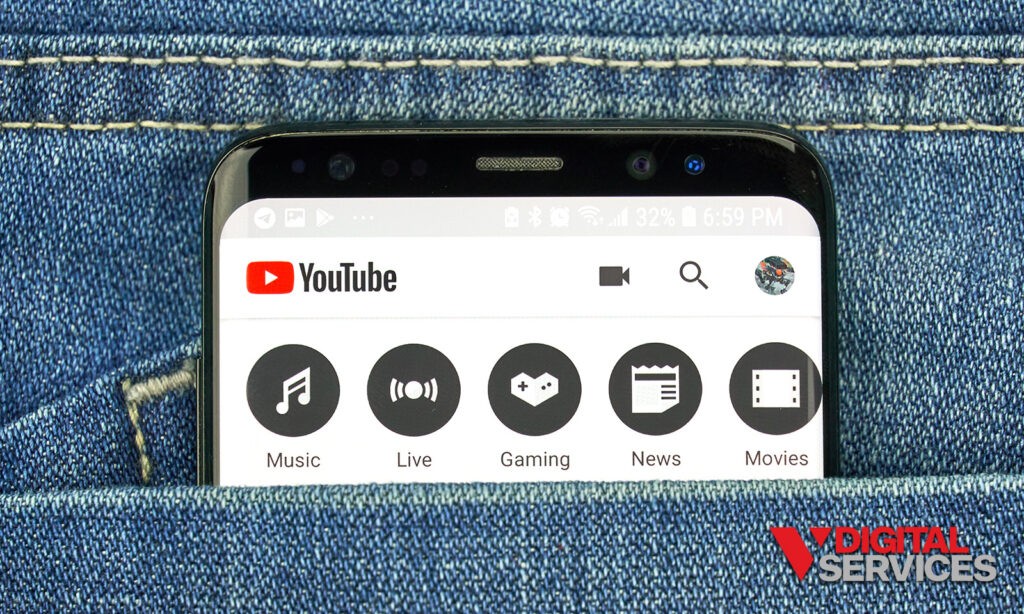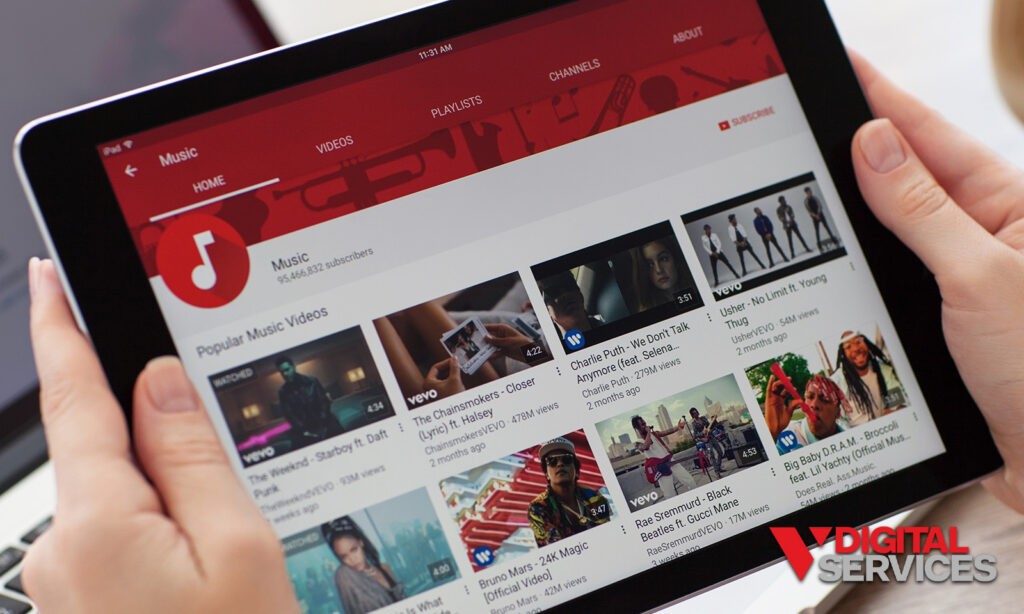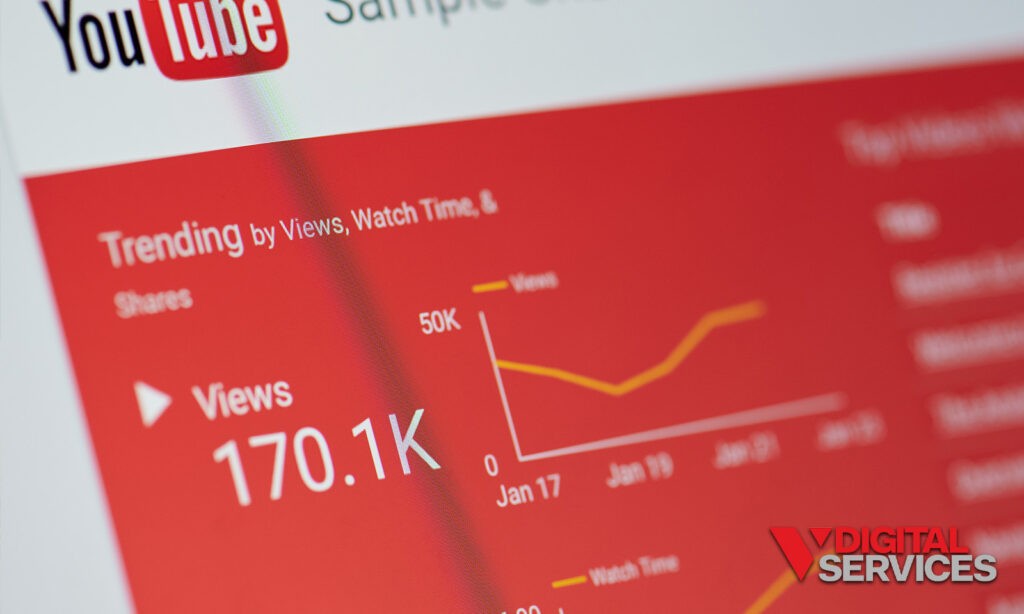Engaging, relevant, and visually stunning – your YouTube videos can check all these boxes, but even so, they might be virtually impossible to find in the vast ocean of content that YouTube hosts. If this situation sounds all too familiar, it’s time to look at YouTube SEO.
Ranking on YouTube is not solely about the quality of your content, but also how well that content is optimized for search. By understanding the intricacies of YouTube’s algorithm and mastering YouTube SEO optimization, you can significantly increase your videos’ visibility and reach.
In this guide, we’re delving into the fundamentals of SEO for YouTube videos. We’ll shed light on why it’s a crucial aspect of your video marketing strategy and offer an array of practical tips on how to rank YouTube videos more effectively. By understanding these key principles, you can transform your YouTube channel into a powerhouse of organic traffic, significantly amplifying your message and brand reach.
What is YouTube SEO?
Improving YouTube SEO means fine-tuning your videos, channel, and metadata to rank higher in YouTube’s search results to earn your way into the recommendations seen by potential viewers. It’s not just about incorporating keywords, but also about designing compelling thumbnails, crafting catchy titles, optimizing video descriptions, and a myriad of other strategies. All these efforts combine to make your videos appealing to both the viewers and YouTube’s search algorithm.
Let’s break down the different factors contributing to YouTube’s algorithm, so you can begin to see how to form your YouTube SEO optimization strategy.
Keywords
Keywords act as a compass guiding your YouTube SEO journey. They should be embedded into your video titles, descriptions, and tags to boost visibility in YouTube’s search results. Keyword research will help you identify terms and phrases that your target audience is likely to use in their search queries. These keywords provide context to YouTube’s algorithm, enabling it to appropriately index and rank your video.
Thumbnails and Titles
Your video’s thumbnail and title resemble a book cover – the initial components a potential viewer sees while scrolling through the search results or recommendations. When armed with eye-catching designs and intriguing titles infused with target keywords, this duo can magnetize viewers to your videos, a strategy that can elevate your click-through rate (CTR) and overall visibility, serving as a driving force behind your YouTube SEO strategy.
Video Descriptions
A well-curated video description performs a dual job – it provides a snapshot of your video content to viewers and clues to YouTube’s algorithm. Packing this section with a precise overview of your video, target keywords, and relevant links optimizes your video’s SEO performance, much like laying breadcrumbs to guide viewers toward engaging more deeply with your content.
Video and Channel Metadata
It’s easy to get wrapped up in the video production process, but your channel’s metadata, including the channel name, description, and keywords, shouldn’t fall behind. Fine-tuning these helps form the backbone of your SEO strategy for YouTube videos, contributing to higher search result rankings and more recommendations cascading onto your videos.
Engagement Metrics
Engagement metrics – likes, comments, shares, and watch time – are the barometers of your content’s effectiveness. YouTube’s algorithm factors in these metrics when ranking videos. So, weaving high-quality, compelling content that sparks viewers’ engagement can enhance your YouTube SEO performance, widening your reach to a more extensive audience. The secret is to create content that doesn’t just inform but engages viewers in new and interesting ways.
Why YouTube SEO Benefits You
YouTube SEO is not a choice, but a necessity in today’s content-crowded space. No matter how high-quality your videos may be, if your audience can’t actually find them, they become pointless.
Here are just a few key reasons why it’s so important to learn how to rank YouTube videos using a smart SEO strategy:
SEO empowers you to stay competitive.
With YouTube boasting over 2 billion logged-in users every month and a staggering amount of videos uploaded daily, carving out a niche for your content is no simple task. Deploying a robust YouTube SEO strategy gives you the ammunition to emerge above a sea of content, expanding your reach to a larger audience, arming you with an advantage over creators who might miss the beat on their YouTube SEO while providing your channel with the prominence it deserves.
You can gain better visibility on Google searches.
It’s no secret that Google owns YouTube – but exactly what does that mean for you? If you play your cards correctly (in other words, optimize YouTube videos with a keen eye on SEO), your videos can find their way to Google search results.
Finetuning your YouTube videos with SEO is like hitting two targets with one arrow – you amplify your visibility on Google, pull in more organic traffic, and potentially bolster your overall search engine performance.
SEO helps your content be discovered.
The strength of YouTube’s algorithm lies in its suggestive prowess, leading viewers to content they might like. When your videos are primed with effective SEO, they’re more likely to be pitched by this algorithm, enhancing the possibility of landing on new viewers’ screens. It’s like casting a wider net in the digital ocean, increasing the catch of your audience and amplifying your brand’s digital footprint.
You can kick your engagement and growth into high gear.
As visibility and search rankings on YouTube escalate, so does the engagement on your channel, manifesting as increased views and subscribers. This growth feeds into your brand’s objectives, aiding in your marketing goals. An emphasis on YouTube SEO draws a more engaged, larger audience, driving the engine of long-term success for your channel.
Proper optimization will make sure mobile users are a priority.
In a world where mobile devices are nearly extensions of our hands, optimizing for mobile viewership is critical. YouTube SEO ensures your content performs well, not only on desktops but also on smaller screens. This multi-device approach garners views from an audience segment that’s rapidly growing, further expanding your reach.
How to Optimize YouTube Videos: Top Tips
Now that you have a sound understanding of the importance of YouTube SEO, it’s time to roll up your sleeves and plunge into the practical side. Here are some of our favorite, tried-and-true steps for maximizing YouTube videos for SEO.
1. Conduct keyword research first.
Successful YouTube SEO hinges upon thorough keyword research, helping you identify the interests of your potential viewers and how they express those interests in search queries.
You can use tools like Google Trends to get a feel for trending topics or utilize YouTube’s search suggest feature, which offers real-time search trends. If you want to dive deeper, consider investing in professional tools like SEMRush or TubeBuddy.
By having a well-rounded view of the keywords that are significant to your niche, you can create and optimize content that highly resonates with your audience.
2. Choose keywords with good reach potential.
Once you have a pool of potential keywords, the next step is to shortlist those with high reach potential. These are keywords with a high search volume but low competition. Selecting such keywords can give you an edge over other content creators.
Use YouTube Keyword Tool or Google’s Keyword Planner to gain insight into search volumes and the competition level of your identified keywords. The perfect blend of relevance, reach, and competitiveness can help your videos achieve optimal visibility.
3. Create a good video title.
The title of your video serves multiple purposes. It’s the first thing a potential viewer sees, hints at the content within, and is a significant factor in the YouTube algorithm. Craft a title that grabs attention, creates curiosity, and incorporates your primary keyword.
Keep it within 60 characters to avoid getting cut off in search results. Remember, a good title can significantly impact your video’s click-through rate.
4. Add tags to the video.
Tags are a major guiding force for YouTube’s search algorithm, helping it understand your video’s content and context. While creating tags, start with your specific target keyword, then add related broader tags.
YouTube allows up to 500 characters for tags, so make sure to make the most of this feature without keyword stuffing. Just remember, relevancy is key.
5. Write smart descriptions.
The video description box is your canvas to provide YouTube’s algorithm and viewers with information about your video. A well-written description should contain your target keywords, an outline of your video, and any relevant links.
But that doesn’t mean you should make it a dumping ground for links or keywords. Be strategic and aim for clarity and conciseness.
6. Edit the file name.
Before you upload your video to YouTube, take a moment to edit the file name. Change it from the generic ‘MOV_001’ to a name that includes your primary keyword. This trick is almost like being able to communicate directly with the algorithm to convey what your video contains.
7. Create transcriptions and captions for the videos.
Transcriptions and captions extend the reach of your videos to non-English speakers and hearing-impaired viewers. Additionally, they provide another avenue to incorporate your keywords and enhance your SEO. You can create them manually or use automatic transcription services to save time.
8. Make longer videos.
While there’s no magic video length for YouTube, data suggests that longer videos tend to rank better. They generate more watch time, a key metric in YouTube’s ranking algorithm. However, this means doing something other than dragging out your content unnecessarily. Always aim to create value-packed videos that keep your viewers engaged, regardless of length.
9. Increase CTR in search results.
Click-through rates (CTR) are vital indicators of how enticing your video appears in search results and suggested videos. To improve your CTR, start with creating an engaging video title and thumbnail that can spark curiosity. Ensure that your title is concise and direct and uses powerful words and your target keyword.
Thumbnails should be vivid and clear, ideally using high-contrast colors and close-up images. Including text overlays on your thumbnails can provide additional context about the video content. Also, don’t forget to use consistent branding to make your videos easily recognizable.
Also, be aware that the first couple of lines in your video description appear in search results. Make sure they’re enticing and give a clear idea of what the video is about. Focusing on these factors can make your videos more click-worthy, leading to a higher CTR and better ranking in search results.
10. Increase audience engagement.
Engagement metrics like likes, comments, shares, and watch time influence your video’s YouTube SEO. Encourage viewers to engage with your videos by asking them to like, comment, or share your videos. Additionally, don’t forget to engage back by responding to comments. The more your viewers interact with your content, the higher your chances of ranking.
11. Promote the channel and videos.
Promoting your channel and videos across various platforms is key to extending your reach. For starters, leverage your existing social media channels like Facebook, Twitter, and Instagram. Sharing videos on these platforms can help tap into your existing follower base, opening the doorway to new audiences on your YouTube channel.
You could also embed YouTube videos in relevant blog posts or website pages to ensure your site visitors are made aware of your YouTube content and be prompted to check it out. Don’t forget to use email newsletters to share your latest videos with your subscribers.
Participate in relevant communities, forums, or groups like Reddit or Quora, and share your videos where they can provide value. However, remember to follow the rules of each platform and avoid spammy behavior. Partnering with influencers or other YouTubers for shout-outs or collaborations can also boost visibility and attract new subscribers.
12. Create custom thumbnails for your videos.
Thumbnails act as the billboard for your video. An eye-catching thumbnail can significantly impact your video’s click-through rate. Use high-quality images, legible fonts, and colors that pop to draw the viewer’s eye. Remember to ensure that your thumbnail is an accurate representation of your video content.
13. Take advantage of end screens and YouTube cards.
End screens and YouTube cards can keep viewers on your channel for longer durations. You can use them to promote your other videos, ask viewers to subscribe, or even direct them to your website. Their strategic use can increase session duration, a key metric for YouTube’s algorithm.
14. Aim to create high-retention videos.
Viewer retention is a measure of how long viewers stick around to watch your video. High retention rates suggest to YouTube that your video provides valuable, engaging content, resulting in better rankings. To optimize for viewer retention, start your video with a compelling hook—a question, a surprising fact, or a bold statement can work well to grip your audience from the start.
Content quality is paramount, so ensure your videos are value-packed and relevant to your audience’s interests. Use a clear and concise script, high-quality visuals, and professional audio to create a seamless viewing experience.
Beyond the introduction of your video, you also need to be able to engage your viewers throughout the video. Interactive elements such as polls or asking for comments about a specific topic can encourage active viewing. Also, make sure to structure your video well, breaking it down into sections or using timestamps for longer videos to improve navigability.
If you have a little more experience with video production, editing techniques can significantly influence viewer retention. Using B-roll, transitions, graphics, and subtitles can keep the viewing experience dynamic and interesting.
YouTube SEO Optimization: What Not to Do
While there are plenty of effective strategies to enhance YouTube SEO, it’s equally important to be aware of tactics that can potentially harm your YouTube SEO performance or user experience.
Here are a few to watch out for:
- Keyword Stuffing: It’s important to include keywords in your titles, descriptions, and tags, but overdoing it – known as keyword stuffing – can backfire. YouTube’s algorithms are sophisticated enough to recognize this tactic and may penalize you for it. It can also make your content appear spammy to viewers.
- Misleading Metadata: Never use misleading titles, thumbnails, or descriptions to attract clicks. This can frustrate viewers if your content doesn’t match their expectations, leading to high bounce rates and negative user signals to YouTube, which can hurt your rankings.
- Ignoring Viewer Comments: Engagement signals like comments are crucial for YouTube SEO. Ignoring viewer comments can negatively impact engagement rates. Plus, responding to comments can build a sense of community, encouraging viewers to return and engage more with your future content.
- Neglecting Channel Layout and Branding: A poorly organized channel or inconsistent branding can confuse viewers and may lower their likelihood of subscribing or engaging further. Ensure your channel homepage is well-organized with playlists and sections, and maintain consistent branding across your videos.
- Not Monitoring Analytics: Ignoring YouTube analytics can cause you to miss vital information about your audience behavior, content performance, and areas for improvement. YouTube’s built-in analytics tool provides valuable insights that can help you refine your SEO strategy.
- Low-Quality Content: Lastly, never compromise on the quality of your content in favor of quantity or quick output. Low-quality videos can lead to low viewer retention rates, low engagement, and ultimately, lower search rankings. Always aim to deliver value-packed, high-quality content to your viewers.
Discover How to Use SEO to Your Advantage Starting Now
Optimizing your YouTube videos for SEO is a strategic process requiring consistent attention and effort, but the juice will absolutely be worth the squeeze. YouTube optimization goes beyond just uploading a video – it’s about using every tool at your disposal to create content that speaks to your audience and also connects with YouTube’s sophisticated algorithms. From keyword research to crafting engaging titles, writing smart descriptions, increasing audience engagement, and creating high-retention videos, each step plays an essential role in boosting your YouTube presence.
But remember, these steps are just the start of your YouTube SEO journey. There are countless more strategies, techniques, and insights to discover and apply. With the ever-changing landscape of YouTube’s algorithm, staying informed is important to maximize your video content’s reach and impact.
Navigating the complexities of YouTube SEO can be challenging, but you don’t have to do it alone. V Digital Services is here to guide you through the process, providing expertise, insights, and personalized support tailored to your unique needs and goals. Our team is dedicated to helping you understand and implement effective YouTube SEO strategies that can drive tangible results.
Ready to take your YouTube SEO to the next level? Connect with V Digital Services today!
Photo Credits:






 PREVIOUS
PREVIOUS